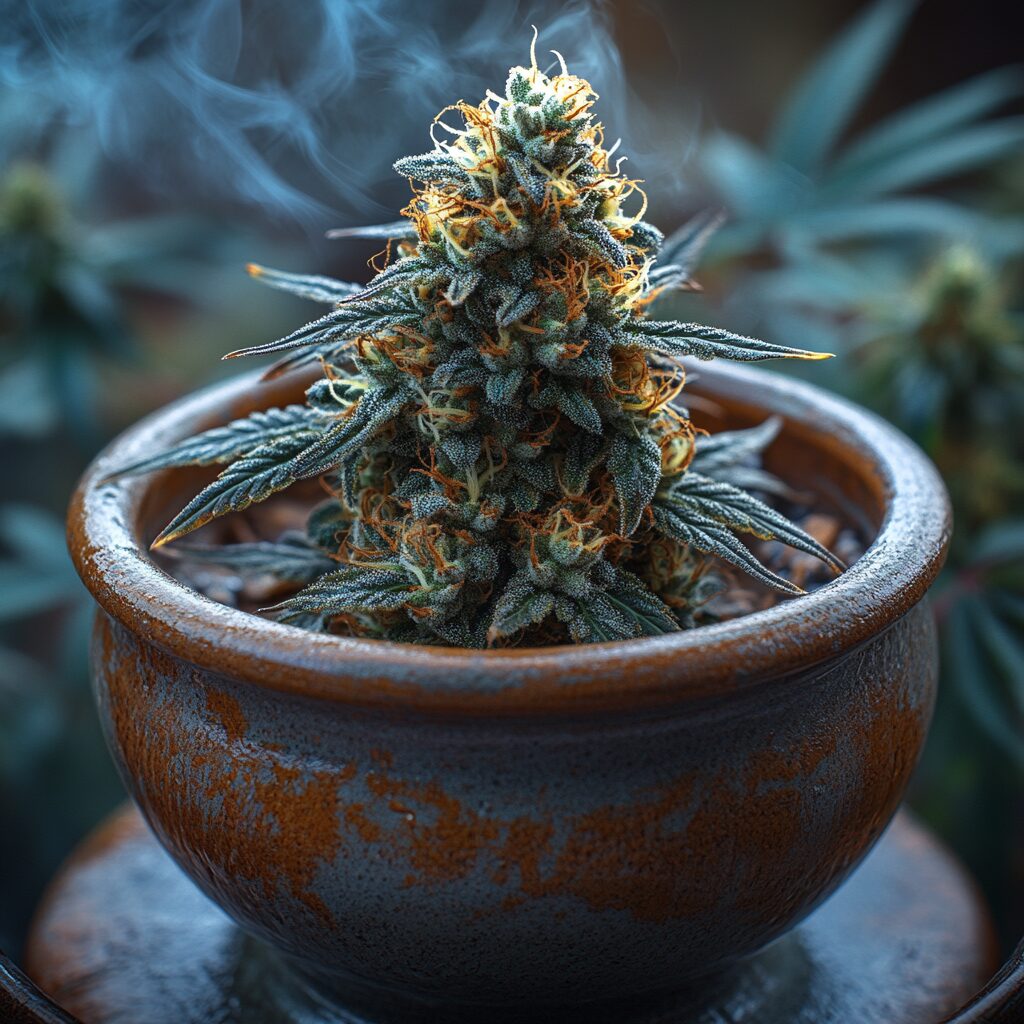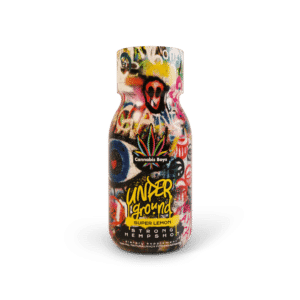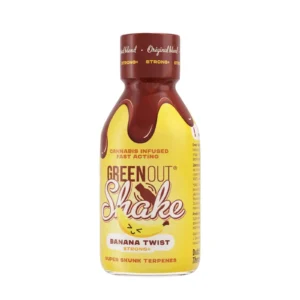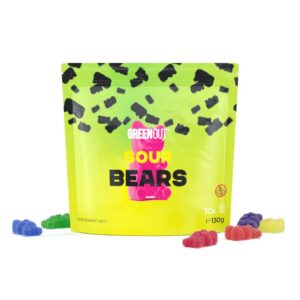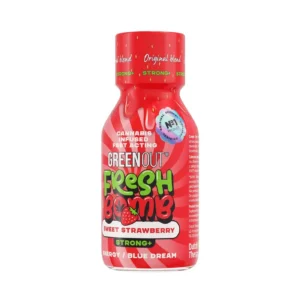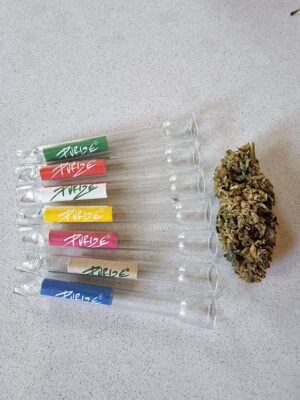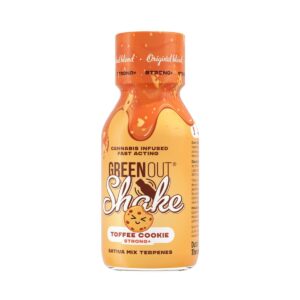Decarboxylation of marijuana is a process that involves heating hemp raw materials to remove fatty acids associated with cannabinoids. Through this process, cannabinoids such as THC (tetrahydrocannabinol) go from an acidic form (THCA) to a non-acidic form that is more active and better absorbed by the body.
Why is decarboxylation important?
Marijuana decarboxylation has several key meanings:
- Increased cannabinoid activity: Non-acidic forms of cannabinoids are more psychoactive and medically active compared to their acidic counterparts. For example, THC is about 40 times more effective than THCA.
- Improving assimilation: Non-acidic cannabinoids are better absorbed by the body, which increases their effectiveness and long-lasting effect.
- Product safety and quality: Decarboxylation helps eliminate undesirable compounds that may be present in raw hemp products. This improves the overall quality and safety of the products.
Decarboxylation process
How does the decarboxylation process work?
Decarboxylation occurs when hemp raw materials are subjected to high temperatures for a specified period of time. As a result of this process, the acidic carboxyl groups (-COOH) are decarboxylated, leading to the release of carbon dioxide (CO2) and the conversion of cannabinoids from the acidic to the non-acidic form.
Effect of temperature on decarboxylation:
- Low temperature: The decarboxylation process may take longer, but is less efficient. For example, at 100°C, the process can take several hours.
- High temperature: The process is faster, but too high a temperature can lead to excessive degradation of other components and reduced cannabinoid activity. The optimal temperature is usually 120-160°C.
Decarboxylation time and its significance:
- Short time: May lead to incomplete decarboxylation and weaker cannabinoid activity.
- Long time: Increases the risk of degrading other ingredients and reducing product quality. The optimal time is usually 15-30 minutes at 120°C.
Types of decarboxylation:
- Convective decarboxylation: Uses hot air to heat raw materials. This is the method most commonly used in the hemp industry.
- Induction decarboxylation: Uses microwave energy to heat raw materials. It is a fast and efficient method, but requires specialized equipment.
- Hybrid decarboxylation (convection-induction): It combines both of the above methods, offering the advantages of each while minimizing their disadvantages.
Why is decarboxylation important?
Changes in the chemical composition of marijuana:
Decarboxylation affects the chemical composition of marijuana, converting the acidic forms of cannabinoids (THCA, CBDA, CBCA) into their non-acidic counterparts (THC, CBD, CBG). This in turn affects the chemical profile and activity of the product.
Effects on psychoactive and medical effects:
Non-acidic cannabinoids are more psychoactive and have stronger therapeutic effects than their acidic forms. Thanks to decarboxylation, cannabis products are more effective in treating various ailments and disorders.
Safety and quality of hemp products:
Decarboxylation helps remove unwanted compounds, such as chlorogenic acid, which can be harmful to health. This improves the overall quality and safety of hemp products.
Decarboxylation methods in practice:
- Decarboxylation in the oven: Place raw materials on a baking sheet and heat in the oven for the specified time at the appropriate temperature.
- Decarboxylation in the microwave: Use a special decarboxylation vessel that will allow you to heat the raw materials evenly and avoid burning.
- Decarboxylation in a convection decarboxylator: A professional decarboxylation device that provides precise control of temperature and process time.
- Decarboxylation in a microwave induction decarboxylator: A fast method that uses microwave energy to heat raw materials.
Decarboxylation time and temperature depending on the type of product:
- Hemp dries: 15-30 minutes at 120°C is recommended.
- Oils and extracts: Shorter time (10-15 minutes) at higher temperature (140-160°C).
- Concentrates (wax, hash): Longer time (30-60 minutes) at lower temperature (100-120°C) to avoid burning and excessive degradation.
How to check if the product has been properly decarboxylated?
Checking the decarboxylation process:
- Fragrance: Properly decarboxylated raw materials should have a characteristic "bakery" aroma. If the product has a stronger hemp aroma, it may require additional decarboxylation time.
- Color: The product should have a uniform color, with no obvious spots or scorching. If the color is uneven or brown spots appear, it may indicate excessive heating.
- Burning rate: A properly decarboxylated product should burn evenly and have a slightly faster reaction than the raw product. If the combustion is slow or chaotic, it may indicate insufficient decarboxylation.
- Laboratory tests: The most accurate method of checking decarboxylation is laboratory tests, which can determine the percentages of acidic and non-acidic cannabinoids.
Common errors during decarboxylation
- Too high a temperature: Can lead to over-decomposition of components and reduced cannabinoid activity.
- Decarboxylation time too long: Increases the risk of burning and loss of valuable ingredients.
- Uneven heating: May lead to non-uniform color and odor of the product.
- Lack of adequate ventilation: May cause accumulation of smoke and harmful substances in the room.
- Using too small a vessel for decarboxylation: Limits the space for even heating of raw materials and can lead to burning.
Storage of decarboxylated products:
- Hemp dries: Store in a tightly closed container, in a dark and cool place. Avoid direct sunlight and high temperatures, which can lead to loss of active ingredients.
- Oils and extracts: Store in a dark and cool place in tightly sealed dark glass bottles. Avoid exposure to light and temperatures above 25°C.
- Concentrates (wax, hash): Store in the refrigerator or freezer, in tightly sealed containers. Low temperatures help preserve active ingredients and prevent oxidation.
- Candy and edibles: Store in a dark and cool place in sealed packaging to protect from light, air and moisture.
Effects of decarboxylation on cannabinoid and terpene content:
- Cannabinoids: Decarboxylation converts the acidic forms of cannabinoids (e.g. CBDA, THCA) into their active forms (e.g. CBD, THC). This process increases the bioavailability and potential efficacy of the product.
- Terpenes: Some terpenes may be sensitive to high temperatures and break down during decarboxylation, which can affect the aroma and flavor profile of the product.
- Other ingredients: Decarboxylation can lead to changes in the content of other chemical compounds, such as flavonoids or esters, which can affect the effects of the product.
- Security: Properly performed decarboxylation can increase the safety of hemp products by reducing the content of potentially harmful compounds.
How to use decarboxylated products for medical and recreational purposes
Using decarboxylated products:
- Medical purposes: Decarboxylated products can be used in a variety of ways, depending on your preferences and needs. They can be inhalations, food, infusions or topical oils. It is important to adjust the dose and method of administration according to the individual body's reactions and the doctor's or therapist's recommendations.
- Recreational purposes: Decarboxylated cannabis products, such as dries and oils, can be used for recreational purposes in a variety of ways, such as smoking, vaporization, eating or topical application. As with medical uses, it is important to tailor the dose and method to individual preferences and local regulations.
- Drug interactions: Always consult your doctor before using cannabis products, especially if you are taking other medications or have existing medical conditions. Decarboxylation can affect interactions between cannabinoids and other pharmacologically active substances.
- Monitoring the effects: Once decarboxylated hemp products are started, it is important to monitor their effects on the body, including potential side effects. Dosage and method of administration should be adjusted to achieve the desired effects without causing adverse reactions.
- Cooperation with therapists: When using hemp products for medical purposes, working with a doctor or therapist who specializes in hemp medicine can be extremely helpful. These professionals can provide valuable information on the safe and effective use of these products, as well as monitor their therapeutic effects and potential interactions.
Advantages and disadvantages of decarboxylation
Advantages of decarboxylation:
- Cannabinoid activation: decarboxylation converts inactive forms of cannabinoids (e.g. THCA) into their active forms (e.g. THC), increasing the product's potential efficacy.
- Reduction of acidic forms: This process reduces the acidic forms of cannabinoids, which can be less bioavailable and cause unwanted effects.
- Improve product quality: Decarboxylation can improve the taste, flavor and stability of hemp products, which is important for consumers seeking high-quality raw materials.
- Increased safety: Properly performed decarboxylation can reduce the content of potentially harmful compounds in hemp products, increasing their safety for users.
- Regulatory compliance: In some countries or jurisdictions, decarboxylation may be required to legally trade in cannabis products, helping to avoid legal issues.
Disadvantages of decarboxylation:
- Loss of some ingredients: This process can lead to a partial loss of some valuable ingredients, such as terpenes and esters, which can affect the full aroma and flavor profile of the product.
- Risk of overheating: Improper decarboxylation conditions, such as too high a temperature or duration of the process, can lead to loss of nutrients and the formation of undesirable substances, such as acrolein.
- Dosage implications: After decarboxylation, hemp products may require different doses than before the process, which can be a challenge for consumers accustomed to a certain level of cannabinoid activity.
- Cost and time: Decarboxylation requires appropriate equipment (e.g., oven, smoker) and time, which can increase production costs and delay the availability of the finished product.
- Need for monitoring: The decarboxylation process requires temperature and time monitoring to avoid overheating or undercooking hemp products, which can be difficult for some users.
Best practices in decarboxylation
- Preparation for the process: Before starting decarboxylation, hemp raw materials should be thoroughly washed and dried, all impurities should be removed, and appropriate equipment (e.g., oven, smoker) should be prepared.
- Temperature control: Decarboxylation works best at temperatures around 160-180°C, but should be monitored and adjusted for the specific product. Too high a temperature can lead to loss of nutrients and the formation of undesirable substances.
- Process duration: The decarboxylation time depends on the type of product and the desired degree of cannabinoid activation. It is usually 20-45 minutes, but can be adjusted as needed.
- Monitoring progress: During decarboxylation, the product should be checked regularly to ensure that it is not overheated or undercooked. This can be done with a thermometer or by smell (the characteristic aroma of decarboxylation).
- Cooling: After the process is complete, hemp products should be carefully cooled to prevent further loss of nutrients. It is advisable to do this gradually at room temperature or on a very low temperature in the oven.
- Storage: Finished products should be stored in a dry, dark and cool place to preserve their quality and effectiveness.
- User education: It is important to inform consumers about best practices for decarboxylation and the potential risks and benefits of the process.
Frequently asked questions (FAQs) about marijuana decarboxylation:
What is marijuana decarboxylation?
- Decarboxylation is the process by which THC (tetrahydrocannabinol) is converted from tetrahydrocannabinolic acid (THCA) to THC. This process makes marijuana more psychoactive and more effective in its effects.
Why is decarboxylation important?
- Decarboxylation increases the psychoactivity of cannabis because THCA is converted into THC, which has more potent effects. In addition, decarboxylation can improve the taste and aroma of marijuana and facilitate its extraction into oils and other cannabis products.
How long does the decarboxylation process take?
- The decarboxylation time depends on the temperature:
- At 221°F (105°C), the process takes about 45 minutes to an hour.
- At 130°C (266°F): about 20-30 minutes.
- At 150°C (302°F): approximately 15 minutes.
Does decarboxylation affect CBD content?
- Decarboxylation does not significantly change CBD content, as cannabidiolic acid (CBDA) converts to CBD only at the higher temperatures that are typically used to decarboxylate THCA.
Is it possible to decarboxylate marijuana in the oven?
- Yes, but keep in mind:
- Setting the appropriate temperature (usually 105°C or 130°C).
- Monitor the time and stir frequently to prevent burning.
Are there alternative methods of decarboxylation outside the oven?
- Yes, other methods are:
- Decarboxylation in the microwave (be careful to heat evenly).
- Using special equipment for decarboxylation.
- Boiling or steaming cannabis, although these methods can be less effective and more difficult to control.
What are the potential risks associated with decarboxylation?
- The main risks are:
- Burning marijuana, which can lead to a bitter taste and loss of psychoactive value.
- Release of potentially harmful substances during improper decarboxylation, such as heterocyclic amines.
What are the best practices during decarboxylation?
- The most important rules are:
- Using the right temperature and time to avoid burning.
- Use of temperature control methods (e.g., thermometers).
- Ventilate the decarboxylation area to prevent the accumulation of smoke and potentially harmful substances.
Does decarboxylation affect the potency of marijuana?
- Yes, decarboxylation increases the psychoactivity of marijuana by converting THCA into THC, which is more active. However, the ultimate potency may depend on other factors, such as the concentration of other ingredients and the method of use.
A recipe for marijuana decarboxylation:
Materials and tools needed:
- Marijuana (cannabis)
- Baking paper or aluminum foil
- Oven
- Watch or timer
- Protective gloves (optional)
Marijuana preparation:
- Clean and dry your cannabis thoroughly to remove excess resin and dirt.
- Grind or chop hemp into small pieces. Smaller pieces will decarboxylate faster.
Oven preparation:
- Set the oven to a temperature of 285°F (140°C).
- Place baking paper or aluminum foil on a baking sheet.
Decarboxylation:
- Spread the marijuana pieces evenly on baking paper or aluminum foil.
- Put the baking tray with the cannabis in the oven and set the timer for 30-45 minutes (depending on how much you want to decarboxylate the cannabis).
- Stir the cannabis pieces every 10-15 minutes to decarboxylate evenly. Avoid directly touching them with your bare hands (if you use gloves, make sure they are clean).
- When the time is up, turn off the oven and leave the baking tray inside for another 15 minutes to let the hemp cool down.
Readiness check:
- The aroma and texture may change after decarboxylation. The cannabis should have a more intense aroma and harden compared to the state before decarboxylation.
- If the smell is too strong or the cannabis seems burnt, you can take it out of the oven earlier.
Storage:
- Transfer the cooled cannabis pieces to an airtight container or zipper bag to prevent loss of flavor and effectiveness.
- Store in a dark and cool place, away from sunlight and moisture.
Remember that decarboxylation should be done carefully and in accordance with applicable local cannabis laws. If you have any doubts, consult an expert or consult additional sources of information on safe cannabis use.
